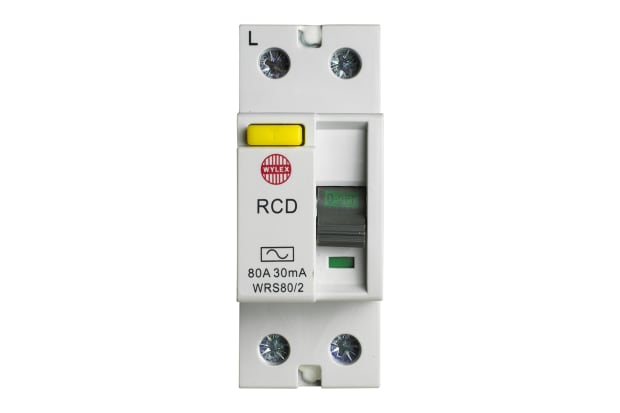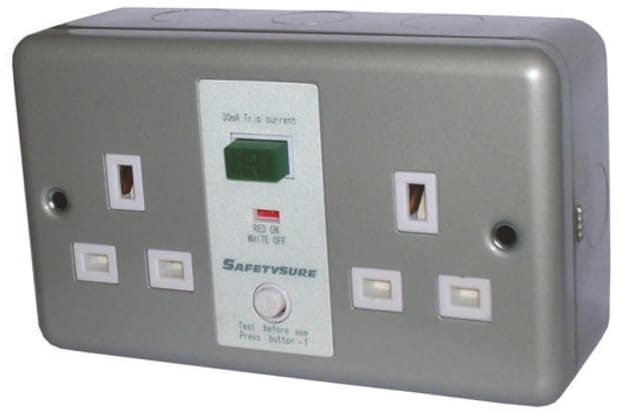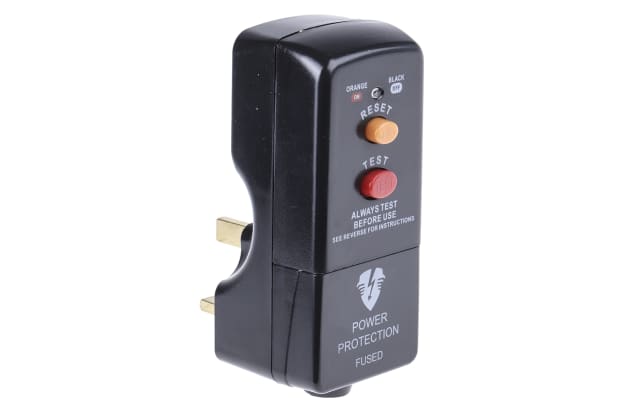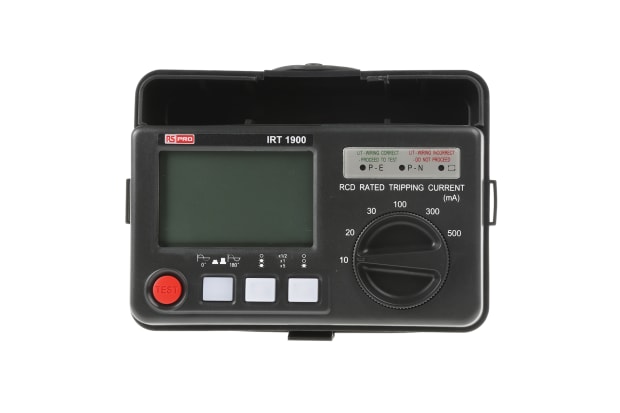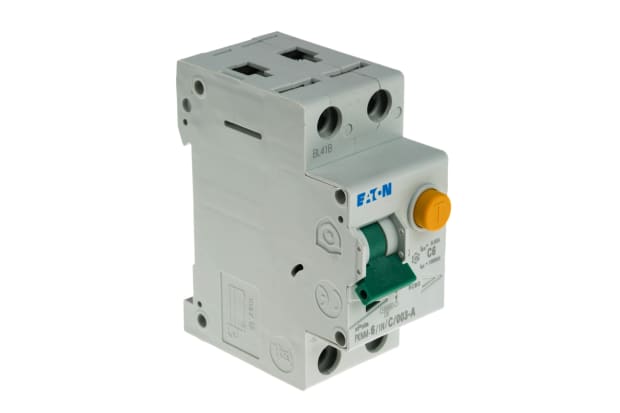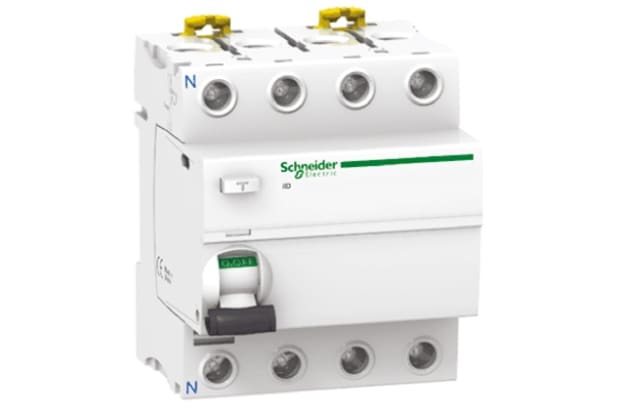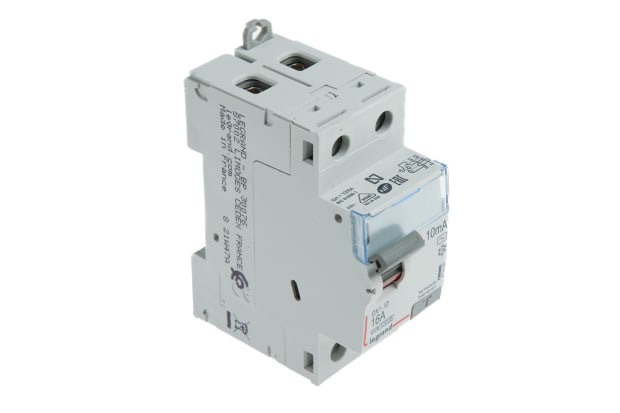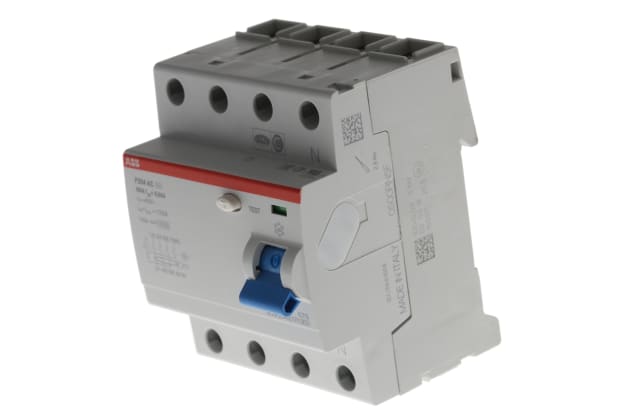- Published 30 Jan 2023
- Last Modified 29 Aug 2023
- 8 min
Complete RCD Guide
Discover all you need to know about residual current devices in our comprehensive RCD guide.

What is an RCD?
An RCD is a life-saving device designed to detect leakage current. In the event of detection, the device automatically disconnects the circuits being monitored. This helps to prevent the risk of a fire or electric shock.
RCDs are invaluable safety devices and are essential for anyone using or working on electricity, in either a fixed or portable environment. This encompasses a wide range of applications, from entire buildings to individual circuits and single pieces of equipment.
As per BS 7671 regulations, the vast majority of domestic circuits in the UK have been required to include an RCD since July 2008. This includes both new and rewired domestic properties and adhering to the standard is critical for safety reasons.

What Does RCD Stand for?
RCD stands for residual current device. These devices may also be known as residual current circuit breakers (RCCBs). In the US and Canada, you may encounter them referred to as ground fault circuit interrupters (GFCIs).
What is RCD Protection?
RCDs are designed to provide additional protection from electrocution and electrical fires when a fault is detected in an electrical circuit. As such, RCD protection is essential for safety reasons and its importance should not be overlooked.
RCD protection can either be fitted at the fuse board or individual sockets via integrated RCD protection. RCDs fitted at fuse boards are often preferred as they can protect multiple sockets on a circuit.
Although RCDs are designed to trip in the event of an electrical imbalance, they do not protect against overcurrent or short-circuiting. It is also important to note that RCDs must be rated at a maximum of 30mA, as higher-rated RCDs will not provide these additional levels of protection.
What Does an RCD Do?
These devices are intended to minimise the risk of electric shocks and fires. This is achieved through monitoring to detect any imbalances or leakage current.
RCDs are designed to disconnect the circuit within 25-40 milliseconds of a potentially dangerous electrical event occurring. In domestic 230V installations, RCDs typically disconnect the circuit when the leakage current reaches 30mA. This is because an amount greater than this could result in an extremely dangerous and potentially fatal electric shock.
Key Products
RCD Sockets
With a range of different types available, browse all RCD sockets and shop online with RS today.
RCD Testers
Choose between different brands, sizes, and functionality when you shop RCD testers online with RS.
How Does an RCD Work?
Understanding how an RCD works is essential for comprehending the vital role that these devices play when it comes to protection. It is mandatory to include RCDs in domestic circuits for valid reasons, primarily the safety of individuals within the property.
An RCD is designed to monitor the electric current flowing through the circuit being protected. Both the phase and the neutral conductors pass through a magnetic ring. During standard, no-fault conditions, the current flowing into and from the load are in balance. However, when a fault occurs, such as a person touching a bare conductor, for example, some of that current will flow through the person’s body to ground or another circuit.
In this scenario, the RCD will detect the leakage current and quickly switch off the supply. This will help to prevent the likelihood of injury as well as damage to equipment. It is designed to greatly reduce the risk of electrical fires and potentially extremely dangerous electric shocks.
RCD Types
There are various RCD types available, each best suited to different applications and environments. These types can be classified in several ways, and it is important to ensure the most suitable RCD is installed in any given circuit.
These types are explained in greater detail in the chart below:
Type | Domestic or Industrial | Suitable Uses |
|---|---|---|
Fixed RCDs | Domestic | - Fuse boxes and consumer units - They can also be wired in to protect one or more circuits |
Socket outlets with integrated RCDs | Domestic | - More hazardous locations such as outdoors or outside bathrooms |
Portable RCDs | Domestic | - Plugging in appliances and equipment such as electric lawnmowers when fixed or RCD sockets are not available - Portable RCDs are designed to plug into any standard socket outlet |
Type AC | Industrial AC applications | - Applications where the fault current is expected to be sinusoidal and at the same frequency as the supply |
Type A | Industrial AC applications | - Applications such as heating plates where a single-phase rectifying circuit will create a pulsating DC residual current |
Type F | Industrial AC applications | - Applications like air conditioners where single-phase motors are controlled by a variable speed drive |
Type B | Industrial AC applications | - Applications where three-phase motors are controlled by variable speed |
Wiring an RCD
Understanding how to wire an RCD will depend on several factors which vary between different models, manufacturers, and devices. As a result, it is tricky to provide universal steps for completing this task due to these variables.
It is important to note that different brands and manufacturers use varying numbers, letters, and terminology. Additionally, the locations of terminals may also vary between models. Always refer to the manufacturer’s guidelines for your specific device to ensure consistency and accuracy.
If you are intending to learn and complete specific tasks such as how to wire an RCD into a consumer unit or how to remove an RCD from a fuse box, you should take extra precautions. Working with electricity can be extremely hazardous so if in doubt, always seek the advice of a professional and request assistance from a fully qualified expert to minimise any risks.
Popular Brands
Schneider
With a wide variety of different types and characteristics, browse high-quality RCDs from leading brand Schneider.
Legrand
Choose the most suitable RCD for your requirements with our extensive range of Legrand RCDs.
ABB
Shop our full range of ABB RCDs and discover the best product for your requirements with RS.
RCD Testing
RCDs should be regularly tested to ensure they are functioning correctly and as expected. As a general rule, fixed and socket RCDs should be tested approximately every three months. However, portable RCDs should be tested every time that they are used.
Testing can be completed quickly and efficiently as most models have a built-in ‘test’ button for this purpose. When the device is tested, it should trip to switch off the supply to the circuit. However, if this doesn’t happen or the RCD fails to operate, further investigation will be required.
What Causes an RCD to Trip?
There are several reasons why an RCD might trip. These include:
- The presence of old, faulty, or damaged electrical wiring
- Incorrect RCD current rating (it is important to check for the correct current rating)
- Presence of moisture in the circuit or appliance
- Weather conditions including heavy rain or lightning
- A blown light bulb
- A faulty appliance plugged into the socket circuit
If an RCD trips, you should switch off all circuits which are protected by the tripped RCD. The device can then be reset, and you can turn the circuits back on to try and identify the cause of the trip. If the cause is simple, like a blown bulb, for example, this should be easy to rectify.
However, if a particular circuit trips the RCD again with no clear cause, it is recommended to leave that circuit switched off until further investigation can be carried out. Similarly, if multiple circuits cause the RCD to trip, this could be a sign of a neutral fault and should also be thoroughly investigated to determine the cause.
RCD Adaptors
A non-latching safety RCD plug adaptor is designed to provide an additional layer of protection. These adaptors are developed in line with the primary function of RCDs to help protect individuals against electric shocks.
Safety RCD adaptors are ideal for use with both domestic and commercial appliances. They constantly monitor the power supply and are designed to cut power within 40 milliseconds in the event of an earth current fault being detected.
The majority of RCD adaptors feature double-pole switching, providing the ability to isolate both live and neutral current when tripped. As they are non-latching devices, a manual power reset will be required after each use.
